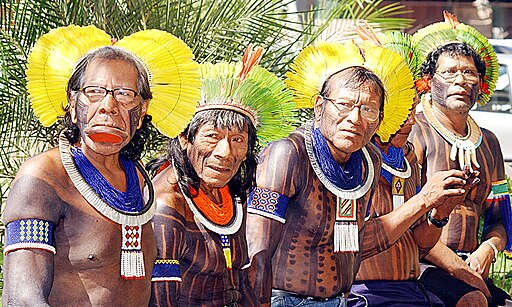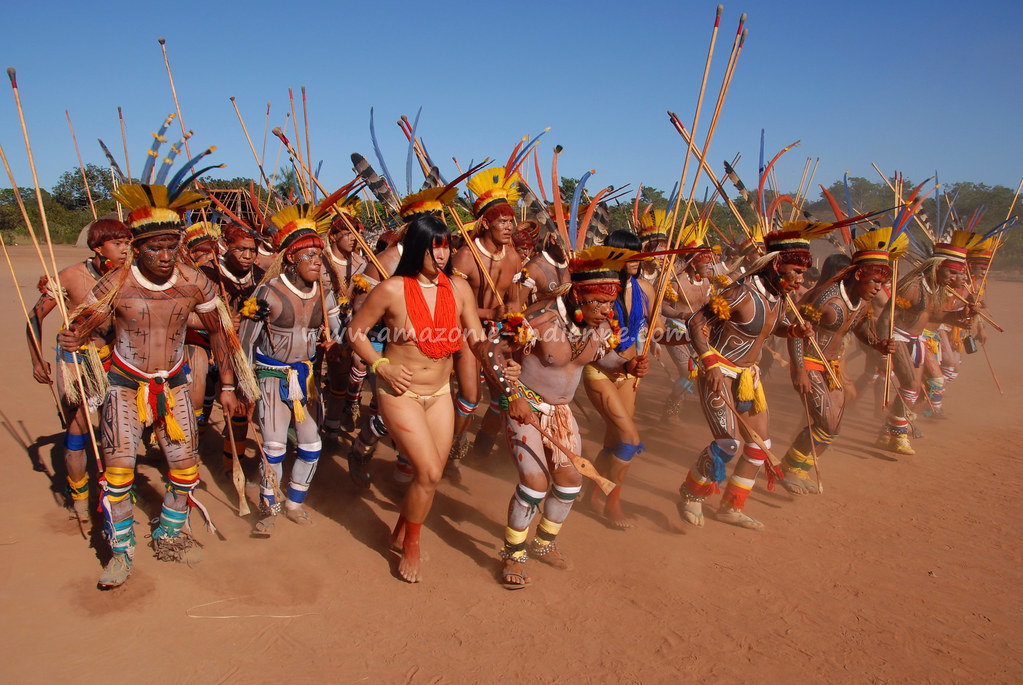THE KAYAPO TRIBE
The Kayapo people are a tribe of about 8,638 indigenous (native) peoples who live in the Amazon Rainforest. They like to call themselves Mebengokre, meaning 'the men from the water place'.
The Kayapo tribe live alongside the Xingu River in several scattered villages
ranging in population from one hundred to one thousand people. They
have small hills scattered around their land and the area is
criss-crossed by river valleys. Their villages are typically made up of about dozen huts. A centrally located hut serves as a meeting place for village men to discuss community issues.
Their appearance is highly decorative and colourful, using: face and body paint, beads and feathers. The Kayapo believe their ancestors learnt how to live communally from social insects such as bees,
which is why mothers and children paint each other's bodies with
patterns that look like animal or insect markings, including those of
bees. Men wear the flamboyant Kayapo headdress with its outwardly
radiating feathers (representing the universe) at ceremonies to mark the
changing of seasons as well as rites of passage.
The Kayapo people use shifting cultivation
where land is farmed for a few years, after which the people move to a
new area. New farmland is cleared (using cutting and burning) and the
old farm is allowed to lie fallow and replenish itself. Crops they grow
include: weet potatoes, yams and papaya.
Since the initial arrival of Europeans around 500
years ago, the Kayapo have experienced forced migration further west
into the rainforests. They have lost: land, habitat and they have also
suffered from the introduction of diseases from the outsiders.
The Kayapo are keen to preserve the rainforest and since 1989 they have worked with The Body Shop to raise awareness about the destruction of the Amazon.
They have also been involved in protests against the building of hydroelectric dams on their land. Despite the prospects of new job opportunities and the providing of an essential power supply to the area, they argued that:
|



No comments:
Post a Comment